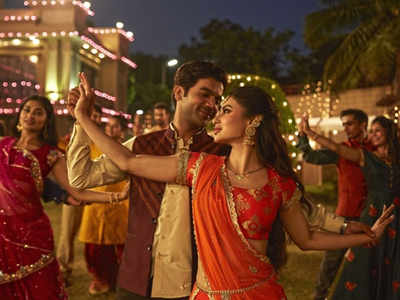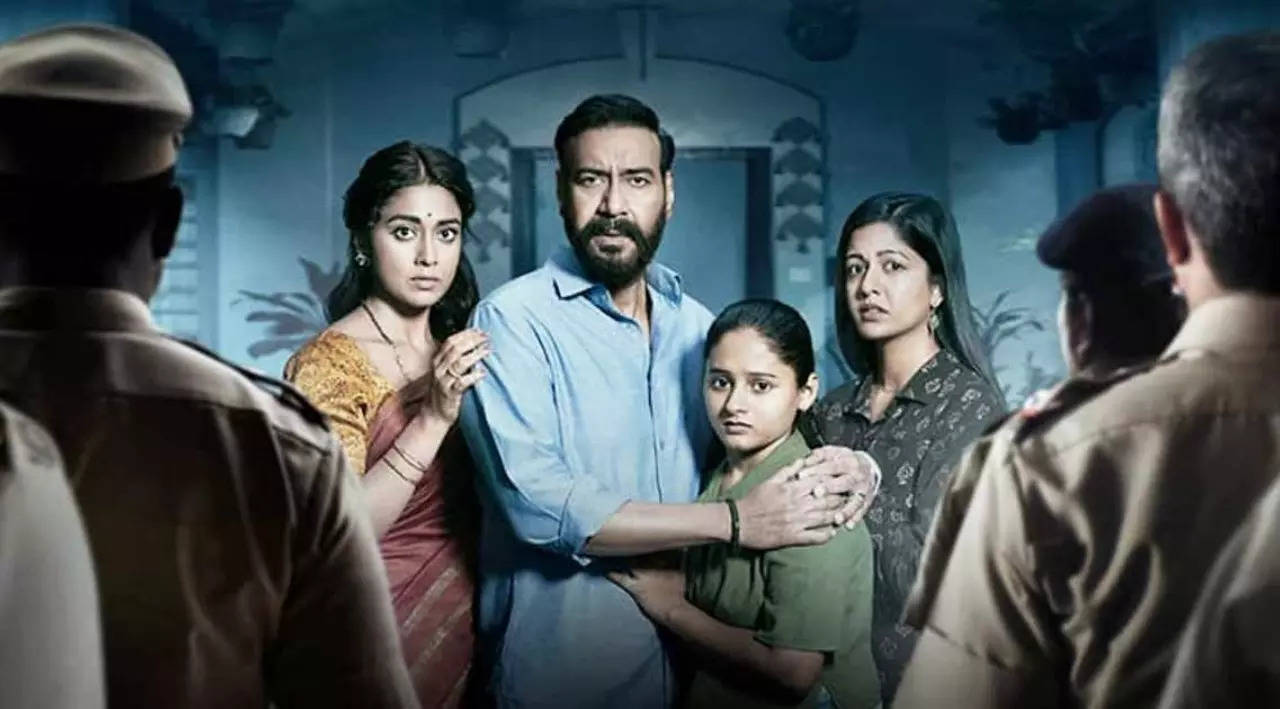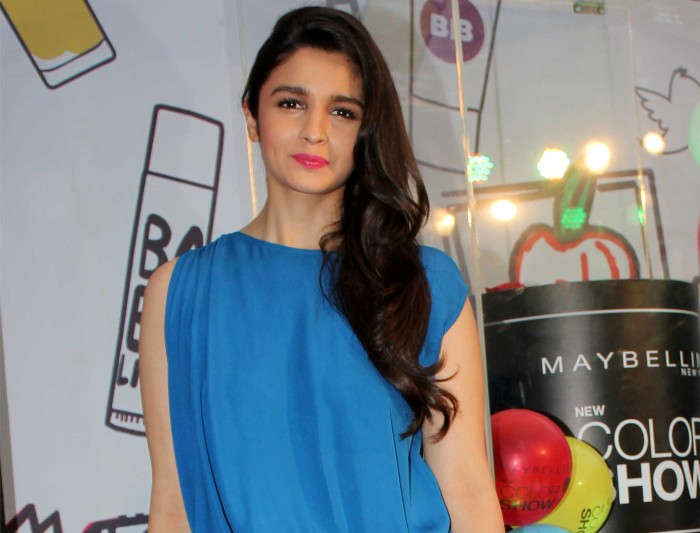Vyjayanthimala
Vyjayanthimala (conceived 13 August 1936) is a previous Indian entertainer, artist and parliamentarian. She is the beneficiary of a few honors, including two BFJA Grants and five Filmfare Grants. She made her screen debut at thirteen years old with the Tamil film Vaazhkai (1949), and followed this with a job in the Telugu film Jeevitham (1950). Her most memorable work in Hindi film was the social direction movie Bahar (1951), which she featured, and accomplished her forward leap with the heartfelt movie Nagin (1954).
She earned a ton of basic recognition for her job in the period show film Devdas (1955), where she played Chandramukhi, the Tawaif with an endearing personality. The film and her acting was adulated, later viewed as her showstopper. For Devdas, she won the Filmfare Grant for Best Supporting Entertainer which she declined, expressing that she assumed a main part equivalent to that of Suchitra Sen, her co-star, thus she was unable to acknowledge the honor for a supporting job. She proceeded to star in series of business triumphs, which incorporate the sentiment film New Delhi (1956), the show film Naya Daur (1957) and the satire film Aasha (1957). Her parts in the social film Sadhna (1958) and the paranormal film Madhumati (1958) each procured her a selection for the Filmfare Grants for Best Entertainer, winning for the previous.
During the 1960s, the wrongdoing show film Ganga Jumna (1961) saw Vyjayanthimala playing a provincial town beauty, Dhanno, a job which won her the Filmfare Grant for Best Entertainer. She won the honor again for the heartfelt show Sangam (1964). She went on reevaluate her picture, procuring a blended gathering after eminently showing up in a one-piece bathing suit in a film job. She later accomplished praise for her presentation in the verifiable show Amrapali (1966) which depended on the existence of Nagarvadhu, illustrious concubine of Vaishali, Amrapali. Her remarkable victories following were the swashbuckler film Suraj (1966), the heist film Gem Criminal (1967), the craftsmanship film Hatey Bazarey (1967), the film Sunghursh (1968) and the amazing film Sovereign (1969).
In 1968, she was granted the Padma Shri by the Public authority of India, the fourth-most noteworthy regular citizen honor. After a featuring job in the film Ganwaar (1970), Vyjayanthimala resigned from the acting business. She has since acquired fame for her moving, especially for her work in Bharata Natyam, a type of Indian old style dance, and was subsequently given the Sangeet Natak Akademi Grant, the most noteworthy Indian acknowledgment given to rehearsing specialists.
In her prime, Vyjayanthimala was the subject of numerous debates, especially for her misjudged associations with her co-stars. In the last part of the 1950s, Vyjayanthimala was connected by tattle magazines with Dilip Kumar, who has acted with her the most contrasted with whatever other entertainer, which brought about perfect on-screen science between them. While working for his home creation Gunga Jumna (1961), Kumar apparently handpicked the shade of sari that Vyjayanthimala would wear in each scene.In the mid 1960s, entertainer Raj Kapoor had started the shooting of Sangam with Vyjayanthimala playing the female lead alongside Rajendra Kumar and Kapoor himself as the male lead. The recording required four years to wrap up. During this time Vyjayanthimala is said to have been sincerely engaged with Kapoor and nearly wedded him. At first, she was vexed with him and avoided him as much as possible. Nonetheless, Kapoor didn't surrender over her disposition. Notwithstanding, Vyjayanthimala in her self-portrayal referenced that it was an exposure stunt by papers in North India to connect her with Raj Kapoor and that she was never in any relationship with him.
Vyjayanthimala wedded the generally hitched Chamanlal Bali, a Punjabi Hindu Arya Samaji from Delhi however lived in Anna Salai, Chennai in 1968. After marriage, she surrendered her acting profession and moved to Chennai. Notwithstanding, somewhere in the range of 1968 and 1970, she went for those movies which she had endorsed before her marriage, like Pyar Hello Pyar, Ruler and Ganwaar. They have a child, Suchindra Bali. In 2007, she distributed her personal history, named Holding, with Jyoti Sabarwal as a co-essayist.
Strict perspectives
Vyjayanthimala is a faithful Vaishnava Hindu and a vegetarian.She grew up paying attention to blessed serenades and reflection melodies. She is an admirer of Aandaal, one of the 12 Alvar holy people of Hinduism. She implores Goddess Saraswati before any open execution to acquire her approval.
Amusement profession
Early progress in South Indian movies
At the point when chief M. V. Raman was searching for another face to project in AVM Creations' Vazhkai, he saw Vyjayanthimala performing Bharata Natyam in Chennai's Gokhale Lobby. He attempted to persuade her grandma, who was anxious about Vyjayanthimala joining films as she felt her stupendous little girl was too youthful to even consider acting in the movies and furthermore it would come in the method of her schooling and dance. Vyjayanthimala played a school young lady named Mohana Shivashankaralingam and acted alongside senior entertainers S. V. Sahasranamam, M. S. Draupadi, T. R. Ramachandran and K. Sankarapani. The film was a major achievement and was revamped in Telugu following one year as Jeevitham with a marginally unique cast, specifically C. H. Narayana Rao, S. Varalakshmi and C. S. R. Anjaneyulu. This film delighted in extraordinary accomplishment upon release.[8] For the Telugu variant, Vyjayanthimala did her own voice naming with a little help from her dad who realized Telugu well and instructed her during the shooting process.Vyjayanthimala likewise did a visitor appearance in the 1950 film Vijayakumari which had entertainer T. R. Rajakumari in a double job. She moved for the tune "laalu...laalu...laalu" which was arranged by Vedantam Raghavayya. However the film was not a business achievement, her western-style of dance became well known and was viewed as one of the significant features of the film.
Vyjayanthimala on the front of May 1951 version of Telugu Swatantra Week after week magazine
The outcome of her Tamil film Vazhkai in South India motivated AVM Creations to revamp it in Hindi as Bahar in 1951. In their most memorable Hindi endeavor, they chose to project Vyjayanthimala again leading the pack job with Karan Dewan, Om Prakash and Pandari Bai (who was credited as Padmini in the film).She learned Hindi at the Hindi Prachar Sabha to name her own voice for her personality in the film. Upperstall.com in their survey, composed that "She rejuvenates the film with her moves however, something which was new then for the North Indian audience".The film became 6th most elevated netting film of 1951 with a decision of film industry hit.[18] After the progress of her presentation films in every one of the three dialects, Vyjayanthimala again acted in a multilingual film which was delivered by Avichi Meiyappa Chettiar of AVM Creations. The main adaptation was in Tamil as Penn where she co-featured with entertainer Gemini Ganesan, S. Balachander and Anjali Devi. "Kalyanam...venum" sung by J. P. Chandrababu for Balachander turned into a moment hit.The second rendition was in Telugu named Sangham which was delivered around the same time with N. T. Rama Rao,Vyjayanthimala, S. Balachandran and Anjali Devi ahead of the pack. The Tamil and the Telugu films were huge triumphs across South India. Yet again the film was changed in Hindi as Ladki featuring Kishore Kumar and Bharat Bhushan, while Vyjayanthimala, alongside Anjali Devi, repeated her job from the first film. Her presentation was depicted by Upperstall.com as, "Vyjayanthimala's moves are the film's redeeming quality although it is accidentally interesting now to perceive how intentional and clearly cheap the groupings are which lead into her moves... Ladki also sets no genuine expectations for "women's activist" spitfire Vyjayanthimala theatrically". The film turned out to be second most elevated netting film of 1953.
In 1954, Vyjayanthimala acted in the film Nagin with Pradeep Kumar. The film got ideal reactions from the crowd and turned into the most elevated earning film of 1954 where it was named as a blockbuster. Her exhibition as the Nagi clan's boss got Mala positive surveys from the pundits, as in 1955, a pundit from Filmfare magazine had said that "Vyjayanthimala in the lead spot puts over an honorable execution other than looking delightfully lovely as the beauty of the slopes. Her moving, as well, is extremely smooth, extraordinarily in those eye-filling variety successions and awesome ballet productions towards the completion", while in The Hindu audit Vijay Lokapally comparably applauded her depiction: "The ethereal Vyjayanthimala, scarcely 18, enlightens the screen with her dazzling excellence, moving around gently from one melody to the next... The nearby shots of Vyjayanthimala feature her capacity to convey such a huge amount with so little exertion... Nagin was a forerunner to her ascent in Hindi film as a notorious entertainer, who joined her gifts, performing and moving, to control the screen based on her conditions... greatest review upsides of Nagin are Vyjayanthimala". Post Nagin Vyjayanthimala had laid down a good foundation for herself as one of the main entertainers in Hindi movies as a result of the film's cross country achievement. Hemant Kumar's music and her dance on the tune, "Man Give, Mera tan give", delivered by Lata Mangeshkar was one of the features of the film.In that very year she acted in Miss Mala with Kishore Kumar, which was a film industry achievement. Vyjayanthimala appeared in Kannada film through a film called Asha Nirasha which was delivered by G. D. Venkatram. The film had Lata Mangeshkar, Asha Bhosle and Mohammed Rafi as the playback singers,but the film was unreleased,though the maker's child Srikant Venkatram guaranteed that the film was delivered and tumbled hopelessly at film industry which made the film dark.
Devdas and leap forward
Vyjayanthimala as seen in Devdas (1955), where she depicted Chandramukhi; the film arose as a basic achievement, and is viewed as her perfect work of art
In 1955, Vyjayanthimala acted in five Hindi movies. The first was chief Abdur Rashid Kardar's Yasmin close by entertainer Suresh, which won the Filmfare Best Cinematographer for Dwarka Divecha. Other than that, she additionally featured in three different movies, specifically Pehli Jhalak with Kishore Kumar, Sitara with Pradeep Kumar and Jashan with Karan Dewan. In the long run the entirety of her four movies delivered in 1955 fizzled in the cinema world. That very year, Bimal Roy cast her as Chandramukhi inverse Dilip Kumar in the widely praised Devdas, which was the variation of the novel with same title by Sharat Chandra Chatterji. The business at first was not for this decision when they found out about Vyjayanthimala being projected in Bimal Roy's film, the reaction being: "How about you accept humorist Kishore Kumar as Devdas?".Initially Nargis was chosen for Chandramukhi's job, yet she wouldn't acknowledge the job. The job was subsequently proposed to Bina Rai and Suraiya however they too turned it down as they needed to paper the lead job of Paro, which was prior proposed to Meena Kumari. Accordingly, the film unit endured with monetary emergency and as of now Vyjayanthimala proposed to do the job of Chandramukhi, where she shared with Bimal Roy, "I'm prepared on the off chance that you figure I can do it".[32] Then again, Nabendu Ghosh, the content essayist of Devdas, said that, "I didn't support Vyjayanthimala [as Chandramukhi], yet we had no choice - nobody needed to play Chandramukhi, and we were focused on our merchants... She was, obviously, an excellent entertainer, however she was excessively youthful for Chandramukhi, as imagined by Saratbabu".[32] On her presentation, Rediff stated: "Vyjayanthimala permeates Chandramukhi with genuine compassion. Who better than Chandramukhi would know the aggravation of an irredeemable love?... Vyjayanthimala, a star after the blockbuster Nagin, actually needed to lay out her acting certifications when Roy conflicted with the tide and cast her in the job of Chandramukhi".[33] Consequently, she won the Filmfare Grant for Best Supporting Entertainer however wouldn't acknowledge it, expressing that her job was a main one and in equivalent significance to the pretended by Suchitra Sen and not supporting. In 2006, a survey directed by Rediff positioned her job of Chandramukhi as one of the most mind-blowing Tawaif characters in Hindi films.[35] Consequently, a similar job was recorded in The Hours of India's "10 Celluloid Whores You Cherished" at number six by Nikhat Kazmi. However the film was fundamentally fruitful, it didn't accumulate a lot of help in the cinematic world and wound up as 10th most elevated earning film of 1955 with a typical decision .In the wake of being perceived as a competent entertainer with Devdas, Vyjayanthimala acted in effective motion pictures in 1956, specifically Taj, Patrani and Anjaan: Some place in Dehli - each of the three movies with Pradeep Kumar as the legend and Kismet Ka Khel with Sunil Dutt. Around the same time, she likewise acted in swashbuckler film Devta, which was a revamp of the immensely fruitful Tamil film Kanavaney Kankanda Deivam.Surprisingly however, she acknowledged a supporting job as a vamp which was initially finished by Lalitha in the Tamil form. Nonetheless, as per Upperstall.com, her job was exceptionally critical in the film and her depiction as the Naag Rani joined by her dance is the fundamental fascination of the film. Likewise featuring in the film, repeating their lead jobs from the first, were Gemini Ganesan and Anjali Devi.[38] In the mean time, she was endorsed by Sohrab Modi for his film Rajhath inverse Pradeep Kumar. Be that as it may, because of her planning issues she was supplanted by Madhubala
Vyjayanthimala then, at that point, acted with Kishore Kumar again in the satire film New Delhi, which turned into the fifth most noteworthy earning film of 1956 a film industry hit.The film exhibits an adoration that fledglings between a Punjabi kid, played Kishore Kumar, and Tamil young lady, played by Vyjayanthimala. Her exhibition was commended by fans and pundits the same; a survey on Upperstall.com with respect to her presentation in this film expresses that: "Vyjayanthimala ends up being the ideal foil for Kishore Kumar...has generally had the compulsory dance succession in basically every film of hers bringing out "old style workmanship" affiliations. She succeeds in the two primary moves in New Delhi — the independent Bharatnatayam Aliruppu number and the Bhangra people dance in her Punjabi symbol and she is totally splendid in the Bhangra society dance...in her subsequent symbol. Indeed, even Vyjayanthimala played a Punjabi young lady and most effectively as well". Consequently, she did a Tamil film called Marma Veeran, alongside Sriram, Rajasulochana, M. N. Rajam, J. P. Chandrababu and V. Nagayya. The film had a portion of the South Indian laid out entertainers like N. T. Rama Rao, Sivaji Ganesan and Gemini Ganesan in a visitor appearance.
Vyjayanthimala inverse Dilip Kumar in Naya Daur (1957)
In 1957, chief B. R. Chopra wanted to make Naya Daur, with Ashok Kumar ahead of the pack. Notwithstanding, the entertainer would not acknowledge this job and it later went to Dilip Kumar. For the female lead, the best option of the chief was the greatest star-entertainer of those days, Madhubala. Yet, as destiny would have it, following 15 days of introductory taking shots at Mumbai, the chief believed that the unit should venture out to Bhopal for a drawn out open air shooting. Be that as it may, Ataullah Khan, the dad of Madhubala, had a problem with this and the job went to Vyjayanthimala. Chopra later sued Madhubala for the loan she got from him for the film, saying that she acknowledged the total and presently in no way wanted to finish it.Vyjyanthimala had recently acted with Dilip Kumar in Devdas and the pair shared a simple science on-screen. The new film, Naya Daur, had a subject of "Man versus machine", and Vyjanthi's depiction of town beauty Rajni got positive surveys from pundits. A survey from Rediff says that: "Vyjayanthimala also isn't your normal testy "gaon ki gori". She capably projects an involved laborer who thinks of thoughts on the most proficient method to portage a stream and puts her life in danger to save the scaffold... magnificent scene between two stars whose science is undeniable"while commentator Taran Adarsh from Bollywood Hungama specifies that: "Honorable exhibitions roll in from Vyjayantimala [natural]...The connections [Dilip Kumar-Vyjayantimala] are so human and believable".[46] Toward the finish of its dramatic run, the film had gathered around ₹ 54,000,000, in this way turning into the second most noteworthy netting film of 1957, second just to the widely praised Mother India, which turned into the most elevated earning Hindi language film ever at that point. Following that, Vyjayanthimala nearly finished paperwork for the lead job in Filmistan's Tumsa Nahin Dekha inverse Dev Anand in 1957, yet because of the maker Sashadhar Mukherjee's guarantee to entertainer Shammi Kapoor, he supplanted Dev Anand with Shammi Kapoor. Notwithstanding, the chief Nasir Hussain was no doubt having some issues as he had proactively perused the content to Dev Anand and Vyjayanthimala, however Mukerji won and he likewise supplanted Vyjayanthimala with Ameeta, who was the protégée of Filmistan Studios proprietor Tolaram Jalan.Vyjayanthimala's next discharge was Kathputli, in which she co-featured with entertainer Balraj Sahni interestingly. This film was about a little kid named Pushpa who, by virtue of being a decent artist and vocalist, helps puppeteer Shivraj in his manikin show. This movie was chief Amiya Chakravarty's last film. He passed on during the recording of Kathputli and the excess task was finished by chief Nitin Bose.Kathputli stays one of the noteworthy movies of Vyjayanthimala which has an odd subject with a Pygmalion touch.[ Vyjayanthimala thenacted in Ek Jhalak with Rajendra Kumar and Pradeep Kumar, which was delivered by the last option with his home creation organization Profound and Pradeep Creations. She got back to the screen again with Kishore Kumar in the 1957 to some degree variety made film Aasha[53] which turned into a hit at the crate office.The story rotates around the focal person Kishore, played by Kishore Kumar, who, in spite of being a Zamindar, has faith in aiding the penniless. Vyjayanthimala, as Nirmala, plays the admirer of Kishore. The story out of nowhere goes from being cheerful and clever to a court-show when Kishore is erroneously blamed for homicide. The remainder of the film sees both the heroes attempting to defend Kishore. The film is most popular for its melody "Eena Meena Dekha" sung by Kishore Kumar and Asha Bhosle, in two different versions.Aasha likewise acquainted entertainer Asha Parekh with the cinema, in a tune close by Vyjayanthimala, whom Parekh depicted as her early showing symbol.
Madhumati, Sadhna and proceeded with praise
Vyjayanthimala featured with entertainer Dilip Kumar in Madhumati (1958)
The next year ended up finding success for Vyjayanthimala, since she endorsed inverse Dilip Kumar in Bimal Roy's Madhumati in the lead spot. Initially expected to exposition four jobs, the chief at long last downsized it to three, Madhumati, Madhavi and Radha.[56] The film was sent off before the Karlovy Shift Global Film Celebration Theater in Czechoslovakia. During the recording in the slopes of Nainital, Vyjayanthimala was expected to move shoeless where she stumbled on a stone and fell, harming herself gravely and making harm her fiber tissues in the bottom of her foot. Roy, who was unnerved and in trouble over the episode as the shooting couldn't be halted demanded her wearing shoes which made it challenging for her during running groupings. Indeed, even after the fulfillment of Madhumati, she actually experienced the torment from the injury which generally helped her to remember Madhumati's shooting experience.[58] Composed by Ritwik Ghatak, the film is about Devendra, played by Dilip Kumar, who takes cover during a tempest in a neglected house. Here he finds a composition of the proprietor of the house Raja Ugranarayan, painted by him in his past life when he was Anand, likewise played by Dilip Kumar, and filled in as a foreman on an estate of Raja Ugranarayan. Devendra had been infatuated with Madhumati, played by Vyjayanthimala. She had ended it all while attempting to save herself from Ugranarayan's advances. Madhumati's phantom at last gets back at Ugranarayan.The film was generally welcomed by pundits and crowd, and it became most noteworthy earning Hindi language film of 1958 and was named as a blockbuster in the cinematic world and wound up as the fifth most noteworthy earning film of the ten years with its net changed in accordance with expansion to about ₹586.4 million. Her exhibition as Madhavi, Radha and the phantom Madhumati acquired her awards from pundits. Shahid Khan from Planetbollywood.com said: "Vyjayantimala has never been one of my most loved entertainers however this is one of only a handful of exceptional exhibitions where I'm totally dumbfounded by her. Her looks while playing both the primary characters are great. With Madhumati, she brings the miracle, shock and honesty required in the individual. With Madhavi, she brings the balance, the interest and pity for the misery that Anand is going through", and that's what karan Bali from Upperstall.com composed: "For Vyjayanthimala, the film grandstands both her going about as well as moving capacities and the confounding progress of Madhumati took Vyjayanthimala to the most noteworthy rungs of stardom...to cap off an incredibly effective year for her. Both, as an entertainer of extensive emotional legitimacy and as a star". Madhumati came to be known as the main film which managed the subject of rebirth and had a gothic noir feel to it.The film later enlivened movies like Milan (1967), The Resurrection of Peter Pleased (1975), Mehbooba (1976), Kudrat (1980), Karz (1980), Karan Arjun (1995) and especially Om Shanti Om (2007) which had additionally lifted the film's peak which prompted Rinki Bhattacharya, the late Roy's girl blaming the film for counterfeiting and undermining lawful activity against its makers.
Vyjayanthimala with Sunil Dutt in B. R. Chopra's Sadhna (1958), a job which won her the Filmfare Grant for Best Entertainer
That very month she had another delivery, B. R. Chopra's Sadhna close by Sunil Dutt. Vyjayanthimala was the subsequent option for the job of Champabai, the whore, after entertainer Nimmi who wondered whether or not to assume the part of a whore, which ostensibly prompted her vocation decline.The Filmfare grant winning story by Mukhram Sharma spins around Rajini, instituted by Vyjayanthimala, a whore's relationship with a teacher, played by Sunil Dutt. Chopra, who recently coordinated Vyjayanthimala in Naya Daur, had adjusted the subject on the recovery of whores which was then a contracted in Ek Jhalak with Rajendra Kumar and Pradeep Kumar, which was delivered by the last option with his home creation organization Profound and Pradeep Creations. She got back to the screen again with Kishore Kumar in the 1957 to some degree variety made film Aasha[53] which turned into a hit at the crate office.The story rotates around the focal person Kishore, played by Kishore Kumar, who, in spite of being a Zamindar, has faith in aiding the penniless. Vyjayanthimala, as Nirmala, plays the admirer of Kishore. The story out of nowhere goes from being cheerful and clever to a court-show when Kishore is erroneously blamed for homicide. The remainder of the film sees both the heroes attempting to defend Kishore. The film is most popular for its melody "Eena Meena Dekha" sung by Kishore Kumar and Asha Bhosle, in two different versions.Aasha likewise acquainted entertainer Asha Parekh with the cinema, in a tune close by Vyjayanthimala, whom Parekh depicted as her early showing












































0 Comments
retng our site